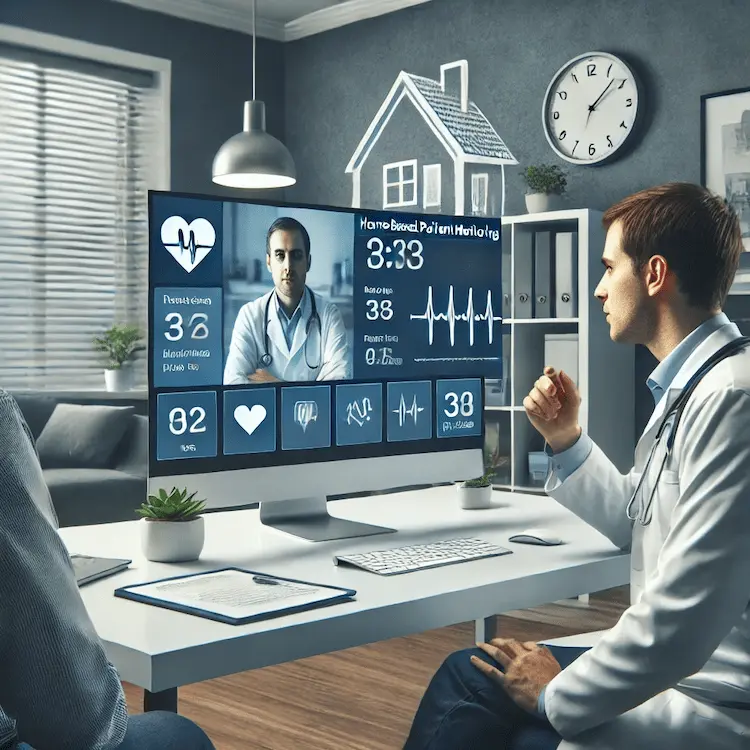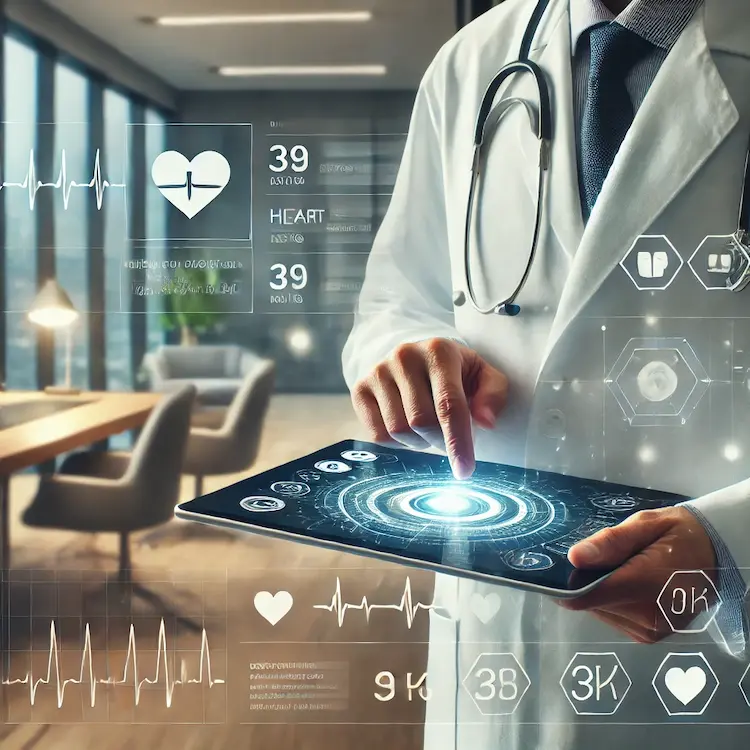Telemedicine has revolutionized healthcare delivery, especially in remote or underserved areas, by providing patients access to medical care without the need for in-person visits. Among the tools that have enhanced telemedicine’s effectiveness is Home-Based Patient Monitoring (HBPM). HBPM allows healthcare providers to monitor their patients’ health remotely, using various devices and technologies to collect data on a patient’s vital signs. This article will break down the concept of HBPM in telemedicine, explain its importance, and compare different methods and tools. We will also discuss the societal impacts and offer practical advice on integrating HBPM into healthcare systems.
Understanding HBPM and its Role in Telemedicine
HBPM, or Home-Based Patient Monitoring, refers to the use of digital tools and technologies to remotely monitor a patient’s health metrics from their home. This system involves the use of devices that collect data on vital signs such as blood pressure, heart rate, oxygen levels, and glucose levels, and send that data to healthcare providers for further analysis.
- Key Components of HBPM:
- Monitoring Devices: These include blood pressure monitors, glucose meters, pulse oximeters, and thermometers, which are equipped with wireless connectivity to transmit data.
- Data Transmission: Patient data is transmitted securely to healthcare providers, allowing for real-time monitoring and adjustments to treatment plans.
- Patient Communication: Communication platforms, such as video consultations or secure messaging, are also integrated into HBPM systems to allow physicians to discuss results with patients.
Importance of HBPM: HBPM plays a pivotal role in improving patient care, particularly in chronic disease management. By continuously tracking health data, healthcare providers can detect potential health issues early and adjust treatments promptly, minimizing hospital visits and preventing complications.

Key Benefits of HBPM in Telemedicine
HBPM offers several advantages over traditional in-person monitoring:
- Improved Access to Care: Patients in rural or underserved areas benefit from consistent monitoring without traveling to healthcare facilities.
- Cost Efficiency: Remote monitoring reduces the need for hospital admissions and frequent in-office visits, lowering overall healthcare costs.
- Better Patient Engagement: HBPM empowers patients to take control of their health by tracking their own data and sharing it with their doctors.
- Timely Intervention: By providing real-time data, HBPM allows healthcare providers to act quickly in case of sudden health deteriorations, leading to better outcomes.
Potential Health and Societal Impacts
The integration of HBPM into telemedicine is transforming healthcare in profound ways. From a health perspective, it significantly improves chronic disease management, particularly for conditions like hypertension, diabetes, and cardiovascular diseases. These conditions often require constant monitoring, which is made easier and more efficient through HBPM.
- Impact on Chronic Disease Management: HBPM is particularly beneficial for patients managing chronic conditions, where regular monitoring is necessary. Studies have shown that HBPM can reduce hospital readmissions by improving compliance with treatment plans.
- Increased Health Equity: By reaching patients in remote locations, HBPM can help address health disparities and provide underserved populations with equal access to healthcare services.
Comparison of Different HBPM Tools and Methods
Various methods and tools are available for HBPM, and each offers distinct features and benefits. Let’s compare some of the most commonly used HBPM tools:
- Traditional Blood Pressure Monitors vs. Smart Blood Pressure Monitors:
- Traditional blood pressure cuffs require manual recording and follow-up visits for data analysis.
- Smart blood pressure monitors automatically transmit readings to healthcare providers in real-time, making monitoring more efficient and reducing the need for follow-up visits.
- Wearable Health Devices vs. Stationary Monitoring Systems:
- Wearable devices, such as smartwatches and fitness trackers, can monitor vital signs like heart rate, oxygen saturation, and activity levels continuously throughout the day.
- Stationary monitoring systems are more accurate but may not offer the convenience of continuous data collection.
Practical Advice for Implementing HBPM in Telemedicine
Healthcare providers considering the integration of HBPM into their practice should consider the following steps:
- Choose the Right Technology: Evaluate different monitoring devices based on the specific needs of your patient population. For example, for patients with hypertension, focus on reliable blood pressure monitors.
- Train Patients: Ensure patients understand how to use their monitoring devices and the importance of sending accurate data to their healthcare provider.
- Establish Secure Data Sharing Systems: Use secure platforms that comply with privacy laws such as HIPAA in the U.S. to protect patient information.
- Set Up Remote Consultation Systems: Incorporate video calls, chat platforms, or secure messaging into your telemedicine system to discuss results with patients.
- Provide Ongoing Support: Offer technical support to patients who may face difficulties with the technology, ensuring consistent monitoring and accurate data transmission.

Statistical Insights and Case Studies
- Statistical Insights:
- According to a report by the American Telemedicine Association, telemedicine usage has increased by over 50% in the past five years, with a significant portion of this increase attributed to HBPM.
- Studies show that patients using HBPM devices for chronic conditions report 40% fewer hospital visits and 30% fewer emergency room visits.
- Case Study: A recent case study by the Mayo Clinic highlighted the success of using HBPM tools to manage diabetes in rural populations. Patients were able to track their glucose levels remotely, and healthcare providers adjusted medications in real-time, leading to better blood sugar control and fewer complications.
Conclusion
The use of HBPM in telemedicine is transforming healthcare delivery by making monitoring more accessible, cost-effective, and efficient. It empowers patients, improves healthcare outcomes, and can potentially reduce healthcare costs. As telemedicine continues to grow, the integration of HBPM is likely to play an even more significant role in the healthcare ecosystem, particularly in chronic disease management and addressing health disparities.
Key Takeaways
- HBPM enables real-time health monitoring, improving patient care and outcomes.
- It plays a crucial role in chronic disease management and health equity.
- The choice of HBPM tools and technologies should align with patient needs and healthcare goals.

